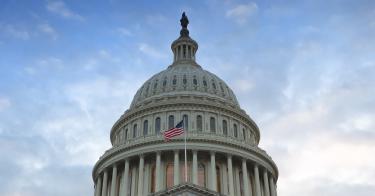Three months ago, when the Senate returned from the August recess, I wrote about what to expect from the judicial confirmation process for the rest of the 116th Congress. With the Senate back from the Thanksgiving recess, let’s take another look.
Persistence by the Senate leadership has paid off, with the percentage of judicial positions currently vacant declining from 12 percent to 10.5 percent. This is still substantially higher than the vacancy rate at this point under the previous five administrations. Vacancies are 34 percent higher than September 2015, when Senator Patrick Leahy (D., Vt.) said that we were “heading into a vacancy crisis.”
The federal judiciary’s administrative office designates certain vacancies as “emergencies” because they have been open so long and have a negative effect on judicial caseloads. The percentage of current vacancies in this emergency category has increased from August, and the current 56.7 percent is much higher than the previous average of 39.4 percent. These judicial emergency vacancies have been open an average of 935 days, compared to 744 days at this point under President Barack Obama.
During the final 13 months of the previous five presidents’ first term, the Judiciary Committee held an average of 15 confirmation hearings for 51 judicial nominees. And during that period, the Senate confirmed an average of 5.8 percent of the judiciary, which today would be an additional 50 judges.
The fourth year of Obama’s first term, when his own party controlled the Senate, might also be a useful guide. In 2012, the Senate confirmed 64 judges, and both hearings and confirmations continued into December.
>>>View the Judicial Appointment Tracker
By now, the record is well-established that Trump’s judicial nominees face, by orders of magnitude, unprecedented obstruction and opposition. Even though the liberal ABA gives Trump nominees comparable or higher ratings, for example, Democrats have forced the Senate to take a separate vote to end debate, known as a cloture vote, on 129 Trump nominees, or 75 percent of his confirmed judges. During the entire first term of the previous five presidents, the Senate took a cloture vote on an average of 1.5 percent.
Ten Democrats serving in the Senate today were here during the first three years (2001–03) of the previous Republican administration. The Senate confirmed the same number of judges in both periods. These ten Democrats—including current Minority Leader Chuck Schumer (D., N.Y.)—voted against an average of five percent of President George W. Bush’s judges, but have voted against an average of 50 percent of Trump’s judges. So this is not simply ordinary, garden-variety partisanship.
These strong confirmation headwinds are likely to continue, and perhaps even intensify. But the Senate can and should continue to make progress filling vacancies and equipping the judiciary to do its job.
This piece originally appeared in the National Review




